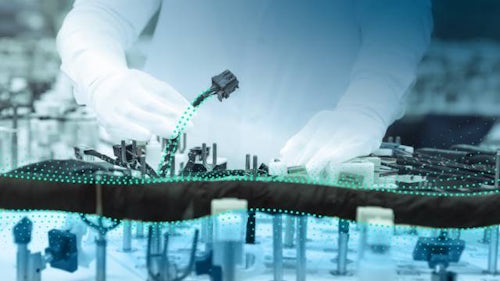Bringing harness manufacturing into the digital age
Companies in the harness manufacturing industry are heavily impacted by new technology trends due to an increased demand for highly automated electric cars and planes. The rise of E/E features turns the wire harness into a key element of the design and manufacturing process. To survive and grow in such a challenging environment and meet the demands of an evolving industry, companies need to adjust their ways of doing business and turn into a true digital enterprise. Siemens Capital™ wiring harness development software portfolio is a model-based engineering approach that can help.
Increasing demand for highly automated vehicles directly translates to a growing need for wire harnesses
As a wire harness manufacturer, technology trends, directly translates to a growing need for wire harnesses, and the increase in features and functionalities turns the wire harness into a key element of the vehicle: it powers and interconnects the various systems in today's vehicles and transmits power and signals between actuators, sensors, and ECUs. Automated driving systems are particularly demanding due to the external sensors that the systems need to perceive the vehicle’s environment, such as approaching objects or speed limit signs. To support this greater number of electrical and electronic systems, wiring harnesses are becoming intensely complex. On top of this, you have to meet very tight timelines, exacting quality requirements, and minimize the cost and weight of the harness.
Increased electrical content and complexity and countless engineering changes can’t be mastered with manual processes
Unfortunately, today approximately 85% of all wire harness manufacturing operations are still carried out manually. What’s even worse, design and manufacturing engineers often transfer data manually between their respective domains, turning data tracking and reuse – let alone innovation – into a tedious task with an uncertain outcome. Further, the potential loss of tribal knowledge, held by engineers that change departments, retire or leave your company results in increased electrical content and complexity, new process requirements, and numerous engineering changes that can’t be mastered with manual processes. To survive and grow in such a challenging environment and meet the demands of an evolving industry, you should significantly change your methods, adjust your ways of doing business, and turn your company into a true digital enterprise.
Digitalization using wiring harness development software
Digitalization is a key adaptation, offering the tools needed to survive in an extremely dynamic industry. Digital twins of production and manufacturing processes can help you to become more successful, and a digital model-based flow unifies the previously fragmented design and manufacturing domains and captures tribal knowledge held by experienced engineers through integrated design rules.
With an entirely digitalized process, you can realize significant improvements in efficiency and productivity. Siemens’ expanded Capital wiring harness development software portfolio offers exactly that. It’s a model-based engineering approach with a continuous digital thread that can help you reduce design errors by 50%, quote-to-production cycle time by 30%, and formboard design time by up to 85%.
